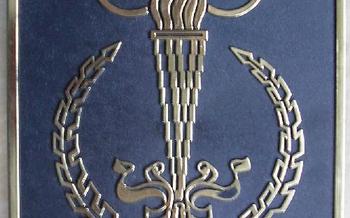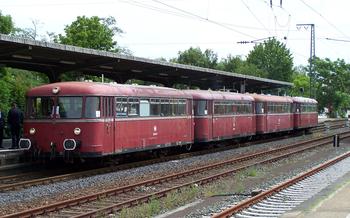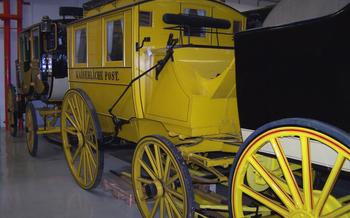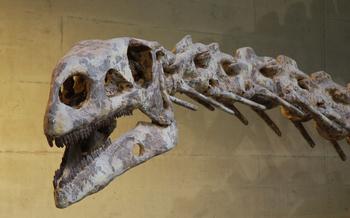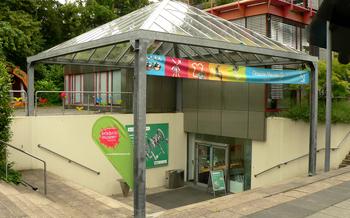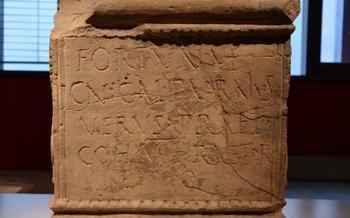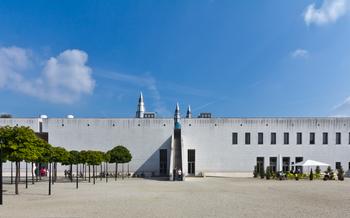
Museum für bergmännische Volkskunst Schneeberg
- A Journey to the Depths: Exploring the Museum für bergmännische Volkskunst Schneeberg
- Tracing the Steps of Miners: Discovering the Mining Heritage of Schneeberg
- Unveiling the Treasures of the Museum: A Showcase of Mining Artifacts
- A Miner's Life: Glimpsing into the Daily Realities of Mining
- Mining Traditions and Folklore: Preserving the Cultural Legacy
- Interactive Exhibits: Engaging Visitors with Mining History
- Guided Tours: Unraveling the Stories Behind the Exhibits
- The Museum Shop: A Treasure Trove of Mining Souvenirs
- Events and Workshops: Enriching the Museum Experience
- Accessibility and Facilities: Ensuring a Welcoming Environment
- Hours of Operation and Admission Fees: Planning Your Visit
- Location and Transportation: Getting to the Museum
- Website and Social Media: Staying Connected
- Educational Programs: Engaging Students and Educators
A Journey to the Depths: Exploring the Museum für bergmännische Volkskunst Schneeberg
In the heart of Schneeberg, Germany, lies a treasure trove of mining history and tradition: the Museum für bergmännische Volkskunst Schneeberg. This remarkable museum is a testament to the region's rich mining heritage, which played a pivotal role in shaping the cultural and economic landscape of Schneeberg and its surroundings.
As you step into the museum, you embark on a journey to the depths of the earth, where miners once toiled tirelessly to extract precious silver and other minerals. The museum's extensive collection of mining artifacts, tools, and machinery offers a glimpse into the lives and work of these resilient individuals, who faced countless challenges and dangers in their quest for underground treasures.
Through interactive exhibits and guided tours, visitors can delve deeper into the history of mining in Schneeberg, from its humble beginnings to its rise as a prominent mining center. The museum also sheds light on the social and cultural aspects of mining, showcasing the traditions, folklore, and community spirit that developed among miners and their families.
A visit to the Museum für bergmännische Volkskunst Schneeberg is an immersive and educational experience that brings the region's mining past to life. It is a must-see attraction for anyone interested in history, culture, and the indomitable spirit of those who worked in the depths of the earth.
Tracing the Steps of Miners: Discovering the Mining Heritage of Schneeberg
Schneeberg's mining history is deeply intertwined with the town's identity and development. The museum showcases this rich heritage, tracing the journey of mining from its humble beginnings to its rise as a prominent mining center. Visitors can delve into the challenges faced by miners, such as safety hazards, harsh working conditions, and economic fluctuations. They will also explore the social and cultural aspects of mining, including the formation of mining communities and the traditions that shaped their lives. Through these exhibits, visitors gain a deeper understanding of the significance of mining in Schneeberg and its lasting impact on the region's cultural heritage.
Unveiling the Treasures of the Museum: A Showcase of Mining Artifacts
The Museum für bergmännische Volkskunst Schneeberg houses an impressive collection of mining artifacts that offer a glimpse into the lives and work of miners throughout history. These artifacts include a wide range of tools, machinery, and equipment used by miners in the Schneeberg region and beyond.
Among the highlights of the collection are the traditional mining tools used by miners in the early days of mining in Schneeberg. These tools, such as pickaxes, shovels, and hammers, were essential for extracting ore from the mines and preparing it for further processing. Visitors can also see examples of more advanced mining equipment, such as drilling machines, ventilation systems, and water pumps, which were developed to improve efficiency and safety in the mines.
One of the most fascinating artifacts in the museum is a replica of a medieval mining cart. These carts were used to transport ore and waste materials in and out of the mines. Visitors can get a sense of the challenges faced by miners as they pushed and pulled these heavy carts through narrow and often dangerous mine shafts.
The museum also displays a collection of mining lamps and lanterns. These lamps were essential for providing light in the dark and often smoky mine shafts. Visitors can see examples of oil lamps, candles, and carbide lamps, which were used by miners over the centuries.
In addition to these tools and equipment, the museum also houses a collection of mining uniforms and safety gear. These items provide insights into the protective measures that miners took to minimize the risks associated with their work. Visitors can see examples of leather aprons, helmets, and respirators that were used by miners to protect themselves from falling rocks, dust, and toxic gases.
By showcasing these artifacts, the Museum für bergmännische Volkskunst Schneeberg provides visitors with a deeper understanding of the challenges, ingenuity, and perseverance of the miners who worked in the Schneeberg region.
A Miner's Life: Glimpsing into the Daily Realities of Mining
The life of a miner was arduous and fraught with challenges. Their days began before dawn, as they gathered their tools and descended deep into the earth's bowels. The mines were dark, damp, and filled with the constant threat of cave-ins, explosions, and toxic gases. Miners worked long hours in these perilous conditions, using picks, shovels, and hammers to extract precious ores from the rock. The work was physically demanding, and the miners often suffered from injuries, respiratory problems, and other health issues. Despite the harsh conditions, miners formed close bonds with their fellow workers, relying on each other for support and camaraderie in the face of adversity. These bonds extended beyond the workplace, as mining communities developed their own unique traditions, folklore, and sense of identity.
Mining Traditions and Folklore: Preserving the Cultural Legacy
The Museum für bergmännische Volkskunst Schneeberg serves as a custodian of the rich traditions and folklore associated with mining in Schneeberg. These traditions, deeply ingrained in the cultural identity of the region, are meticulously preserved and showcased within the museum's walls. Visitors are taken on a journey through time, discovering the festivals, rituals, and legends that have shaped the lives of miners and their families for centuries.
The museum's collection boasts an array of artifacts that tell the story of these traditions. From intricately carved mining tools adorned with symbolic motifs to traditional costumes worn during festive celebrations, each item holds a unique significance. Visitors can admire the craftsmanship and artistry that went into creating these objects, which were not merely functional but also imbued with cultural meaning.
One of the highlights of the museum is the Darstellung des Schneeberger Bergbaus (Representation of Schneeberg Mining), a miniature model that depicts a typical mining scene from the 16th century. This elaborate diorama brings to life the daily activities of miners, from extracting ore to transporting it out of the mines. It offers a glimpse into the challenges and camaraderie that defined the lives of these hardworking individuals.
The museum also hosts regular events and workshops that celebrate and promote mining traditions. These events provide a platform for the local community to come together, share their stories, and pass on their knowledge to future generations. Visitors can witness traditional mining techniques, learn about the history of mining in the region, and experience the vibrant culture that has been shaped by this industry.
By preserving and promoting these traditions, the Museum für bergmännische Volkskunst Schneeberg plays a vital role in safeguarding the cultural heritage of Schneeberg. It ensures that the stories, customs, and beliefs of the mining community continue to be told and celebrated, forging a connection between the past and the present.
Interactive Exhibits: Engaging Visitors with Mining History
The Museum für bergmännische Volkskunst Schneeberg offers a range of interactive and educational exhibits that bring the history of mining to life for visitors of all ages. Through virtual reality experiences, simulations, and hands-on activities, visitors can step into the shoes of a miner and experience the challenges and triumphs of working underground.
One popular exhibit is the virtual mine tour, which takes visitors on a journey through the dark and narrow tunnels of a silver mine. Visitors can see the tools and equipment used by miners, learn about the mining process, and even experience the sensation of riding in a mine cart.
Another highlight is the hands-on exhibit, where visitors can try their hand at panning for silver, operate a replica of a mining winch, and even dress up in traditional mining attire. These interactive elements make the museum a fun and engaging experience for visitors of all ages, allowing them to learn about mining history in a memorable and immersive way.
A young visitor named Sarah shared her experience with the virtual mine tour: "It was so realistic! I felt like I was really underground with the miners. It was a great way to learn about the history of mining in Schneeberg."
The museum's interactive exhibits are a testament to its commitment to making history accessible and engaging for everyone. By bringing the past to life, the museum ensures that the rich mining heritage of Schneeberg continues to inspire and educate future generations.
Guided Tours: Unraveling the Stories Behind the Exhibits
Guided tours at the Museum für bergmännische Volkskunst Schneeberg offer visitors an immersive and educational experience. Led by knowledgeable and passionate guides, these tours provide an in-depth exploration of the museum's exhibits and the history of mining in Schneeberg. The guides bring the exhibits to life with captivating stories and anecdotes, sharing their expertise and insights into the lives of miners and the challenges they faced. Visitors can ask questions, engage in discussions, and gain a deeper understanding of the significance of mining in the region. The tours are suitable for visitors of all ages and interests, and are a great way to make the most of your visit to the museum.
One of the highlights of the guided tours is the opportunity to visit the museum's collection of mining tools and machinery. The guides provide detailed explanations of how these tools were used and the role they played in the mining process. Visitors can marvel at the ingenuity and craftsmanship of the miners who created and used these tools, gaining a deeper appreciation for the challenges they faced in extracting ores from the earth.
The guided tours also shed light on the social and cultural aspects of mining in Schneeberg. Visitors learn about the formation of mining communities, the traditions and rituals associated with mining, and the impact of mining on the lives of miners and their families. The guides share stories of courage, camaraderie, and resilience, highlighting the human side of mining and its enduring legacy in the region.
Whether you are a history buff, a mining enthusiast, or simply curious about the past, the guided tours at the Museum für bergmännische Volkskunst Schneeberg are an unforgettable experience. These tours offer a unique opportunity to explore the fascinating world of mining and gain a deeper understanding of the region's rich cultural heritage.
The Museum Shop: A Treasure Trove of Mining Souvenirs
As you exit the fascinating exhibits, don't miss the opportunity to visit the museum shop, a treasure trove of mining-related souvenirs, handicrafts, and educational materials. Here, you can find unique and locally-made items that serve as a lasting reminder of your visit to Schneeberg and its rich mining heritage.
From replicas of traditional mining tools to delicate jewelry inspired by mining motifs, the museum shop offers a diverse selection of souvenirs that cater to every taste. You can also find books on the history of mining, postcards featuring vintage photographs of miners, and even artisanal products crafted by local artisans using techniques passed down through generations.
Your purchase at the museum shop not only serves as a cherished memento but also contributes to the continued operation and preservation efforts of the Museum für bergmännische Volkskunst Schneeberg. By supporting the museum, you help ensure that future generations can continue to learn about and appreciate the unique history and traditions of mining in this region.
Events and Workshops: Enriching the Museum Experience
Enhancing the museum experience, the Museum für bergmännische Volkskunst Schneeberg organizes a diverse range of events and workshops that delve deeper into the world of mining history and culture. Immerse yourself in themed exhibitions that showcase unique artifacts, historical documents, and captivating stories from the region's mining past. Attend lectures by renowned experts and enthusiasts who share their knowledge and insights on various aspects of mining, from technology and geology to social and economic impacts.
Hands-on workshops provide a unique opportunity to experience mining traditions firsthand. Learn the art of traditional mining techniques, such as panning for gold or using replica mining tools. Participate in interactive activities that allow you to simulate the challenges faced by miners as they worked underground. Whether you're a history buff, a curious explorer, or simply seeking a fun and educational family outing, these events and workshops offer something for everyone.
To stay updated on upcoming events and workshops, visit the museum's website or follow their social media channels. Advance registration is recommended for some events, so be sure to plan your visit accordingly. Embrace the opportunity to deepen your understanding of mining heritage and create lasting memories at the Museum für bergmännische Volkskunst Schneeberg.
Accessibility and Facilities: Ensuring a Welcoming Environment
The Museum für bergmännische Volkskunst Schneeberg is committed to providing an inclusive and welcoming environment for all visitors. Wheelchair ramps and elevators ensure that the museum is accessible to visitors with disabilities, and accessible exhibits allow everyone to enjoy the museum's collection. Restrooms, a cafeteria, and a cloakroom are available for the convenience of visitors.
The museum is located in the heart of Schneeberg, making it easy to reach by public transportation or car. Parking options are available nearby, including paid parking lots and street parking.
A visit to the Museum für bergmännische Volkskunst Schneeberg is an enriching and educational experience for visitors of all ages and abilities. The museum's dedication to accessibility and its commitment to providing a welcoming environment ensure that everyone can explore and learn about the fascinating history of mining in Schneeberg.
Hours of Operation and Admission Fees: Planning Your Visit
Planning a visit to the Museum für bergmännische Volkskunst Schneeberg requires careful consideration of its hours of operation and admission fees. The museum typically opens its doors from Tuesday to Sunday, with specific hours varying throughout the week. During the summer months (April to October), the museum welcomes visitors from 10 am to 6 pm, while in the winter (November to March), the hours are slightly shorter, from 10 am to 5 pm. It's advisable to check the museum's website or contact them directly to confirm the exact hours during your intended visit.
Admission fees are structured to make the museum accessible to visitors from all backgrounds. Adults can purchase a standard ticket for a reasonable fee, while children and students benefit from reduced rates. Concessions are also available for seniors and groups, offering discounted admission prices. The museum recognizes the importance of making its collection accessible to everyone, and it's worth inquiring about any special offers or discounts that may be available during your visit.
To fully immerse yourself in the museum's exhibits and stories, it's recommended to allocate at least two to three hours for your visit. This will allow you to explore the various galleries, engage with the interactive displays, and delve into the history of mining in Schneeberg at your own pace. Consider visiting during off-peak hours, such as early mornings or weekdays, to avoid crowds and ensure a more intimate and enriching experience.
Location and Transportation: Getting to the Museum
Reaching the Museum für bergmännische Volkskunst Schneeberg is a breeze, whether you prefer the convenience of public transportation or the flexibility of your own vehicle. Nestled in the heart of Schneeberg, the museum's address is Geschwister-Scholl-Platz 3, 08289 Schneeberg, Germany. For those relying on public transport, the museum is easily accessible by bus. The nearest bus stop, "Schneeberg, Geschwister-Scholl-Platz," is just a short walk away. For those arriving by train, the Schneeberg railway station is a convenient starting point. From there, you can hop on a bus or take a leisurely stroll to the museum. If you prefer the comfort of your own car, there are several parking options nearby. The "Parkhaus Schneeberg" is a multi-story car park located a few minutes' walk from the museum. Alternatively, you can try your luck with street parking in the surrounding streets. No matter how you choose to travel, the Museum für bergmännische Volkskunst Schneeberg is easily accessible and ready to welcome you on your journey into the depths of mining history.
Website and Social Media: Staying Connected
In the digital age, the Museum für bergmännische Volkskunst Schneeberg embraces the power of technology to connect with visitors from around the world. Its user-friendly website serves as a comprehensive resource, providing detailed information about the museum's collection, exhibitions, events, and educational programs. Visitors can explore virtual tours, access online resources, and stay up-to-date on the latest news and announcements.
Engaging with the museum on social media platforms like Facebook, Instagram, and Twitter offers a dynamic and interactive experience. The museum's social media channels showcase captivating images, videos, and behind-the-scenes glimpses, bringing the stories of Schneeberg's mining heritage to life. Visitors can join online discussions, share their experiences, and connect with fellow enthusiasts from across the globe.
Following the Museum für bergmännische Volkskunst Schneeberg on social media is a great way to stay connected, receive updates on upcoming events, and discover new insights into the fascinating world of mining history. Visitors can share their photos, memories, and stories using the museum's designated hashtags, becoming part of a vibrant online community that celebrates the rich legacy of Schneeberg's mining traditions.
Educational Programs: Engaging Students and Educators
The Museum für bergmännische Volkskunst Schneeberg offers a variety of educational programs designed to engage students of all ages and foster their appreciation for mining history and heritage. These programs are tailored to different grade levels and curriculum requirements, providing a unique and interactive learning experience for students.
Guided tours led by knowledgeable museum educators take students on a journey through the museum's exhibits, where they can learn about the history of mining in Schneeberg, the tools and techniques used by miners, and the challenges they faced. Interactive workshops allow students to get hands-on experience with mining-related activities, such as panning for gold or creating their own mining tools.
The museum also offers educational materials and resources for teachers, including lesson plans, worksheets, and multimedia presentations. These resources help teachers integrate mining history into their curriculum and provide students with a deeper understanding of the subject.
By participating in the museum's educational programs, students gain a valuable insight into the world of mining and its significance in shaping the history and culture of Schneeberg. These programs not only enhance their knowledge but also cultivate a sense of appreciation for the region's mining heritage.
